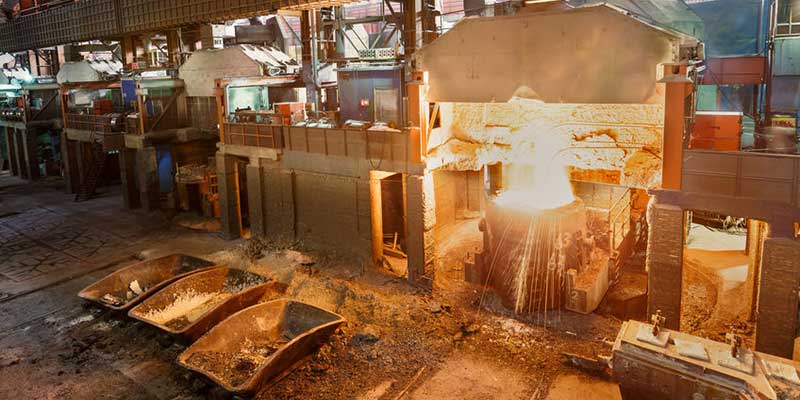Consumption of steel is growing across sectors, and water usage is growing along with it.
While water use in the industry is high, actual consumption is low, making treatment for reuse viable
The iron and steel industry is often thought of as one of the main forces that drive a nation’s economic and technological progress. Historically, it has seen enormous growth driven by globalization and industrialization. In 2015, global crude steel production weighed in at 89.6 million metric tons. Consumption of steel is growing across sectors, and water usage is growing along with it. For instance, producing a metric ton of steel in India requires 60 m3 of water.
Steel production also unfortunately is associated with large-scale pollution. Water is used for processes, cooling, descaling, and dust scrubbing. But very little water is actually consumed, with most reused or discharged. Fresh water generally is used for processes and cooling, while seawater generally is used in once-through cooling systems after pretreatment.
Steel Production Cycle
Steel is produced from raw materials in an integrated cycle, or with scrap melted in an electric arc furnace (EAF). Average water intake for integrated plants is 28.6 m3 per metric ton of steel, with average discharges at 25.3 m3/t. For EAF plants, the average intake is 28.1 m3/t, with mean discharge at 26.5 m3/t. The overall water consumption per metric ton, therefore, is low, at 1.6-3.3 m3. Water loss mainly comes from evaporation, and 90% of water is discharged after cooling and treatment. It is then commonly used by other utilities.
Integrated steel plants contain various sections and smaller plants. An integrated plant might have a raw material handling area, a sintering plant, a coke oven plant, a blast furnace, a steel melting shop (SMS), an oxygen plant, rolling mills, and merchant mills. Altogether, the different sections and component plants can cover several km2.
Water Remediation
Many steel plants are sorely in need of updated water treatment technology. Legacy treatment modes are unable to completely remediate water for reclamation, but newer techniques like membrane separation show great promise.
Typical steel industry waste streams contain hazardous compounds like the complex organic compounds benzene toluene xylene (BTX) and polycyclic aromatic hydrocarbons (PAH), cyanide, ammonia, thiocyanate, phenols, and cresols. These compounds present challenges for treatment.
Treatment stages can include many different technologies. Physical separation, which might include gravity settling, screening, and oil removal, are commonly used in primary stages, but membrane technology is also now a good alternative to traditional separation. Coagulation-flocculation is then commonly used. Then, advanced oxidation processes (APOs) are commonly used for both disinfection and reduction of total dissolved solids (TDS). These include ultraviolet photolysis, hydrogen peroxide oxidation, photo-Fenton’s oxidation, electrochemical oxidation, and ozonation.
APOs may sometimes be used for removal of toxic compounds like PAHs. For removal of some pollutants such as cyanide, however, phenol-specific adsorption is also used.
It is also fairly common for steel plants to include a traditional activated sludge stage in tertiary treatment to reduce the load of organic material.
Water Recovery
Water recovery in the steel sector involves cooling and desalinating water to control salt concentration in circulation systems, and decreasing consumption and discharge of fresh water while improving steel quality and the service life of equipment. Combining treatment methods such as membrane separation, chemical treatments, reverse osmosis, and ultrafiltration can produce a high level of contaminant removal and deliver reusable effluents that are easier on equipment, eco-friendly, and more economically feasible than discharging water untreated into the environment.
Contact Fluence to learn more about our water treatment solutions for the iron and steel industry.

